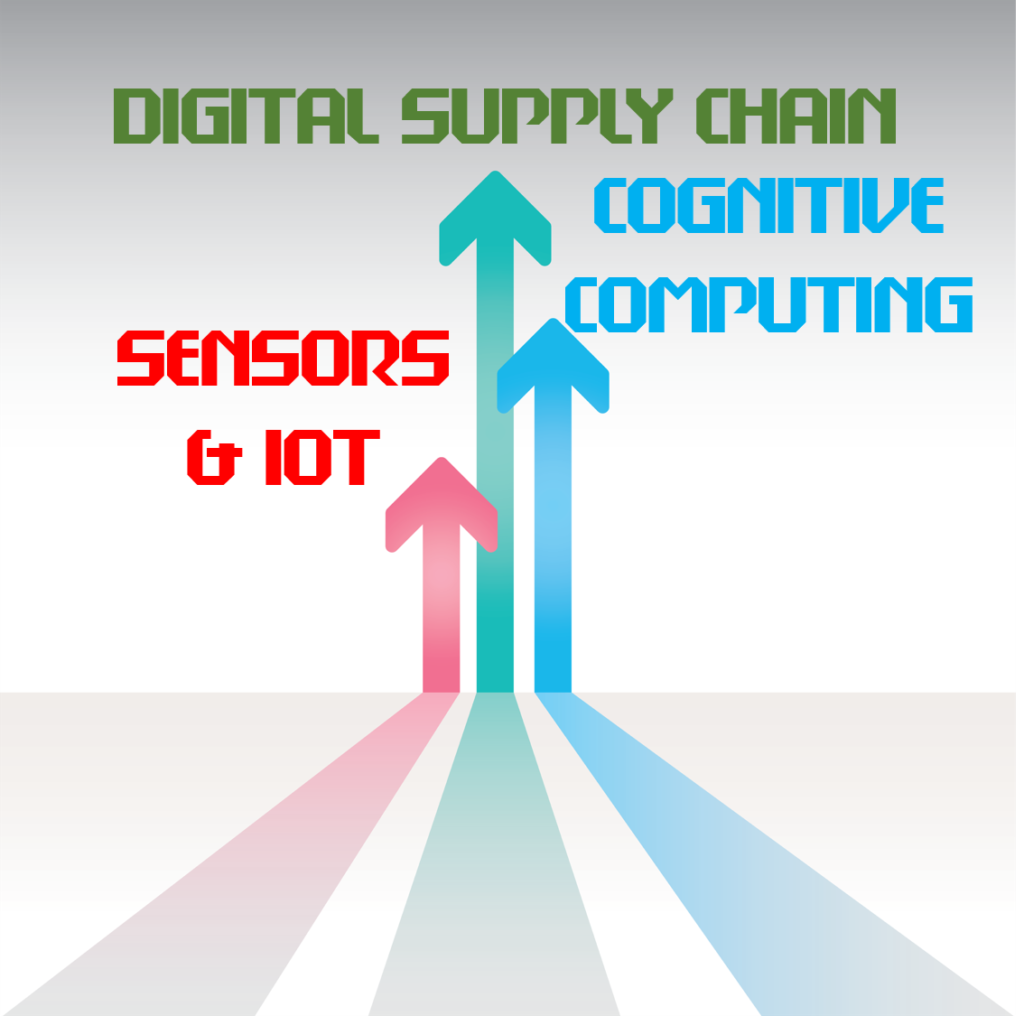“Few technology trends have gotten as much publicity over the past few years as the Internet of Things (IoT) — and with good reason,” writes Derek Banta (@DerekBanta), Director of Mobile and Digital Engagement at UPS. “IoT has the potential to transform so many aspects of how customers and businesses interact.”[1] The Internet of Things (as opposed to the World Wide Web) is primarily a network of networks connecting machines (i.e., providing machine-to-machine communications). It has been a much-hyped technology that promises to affect almost every aspect of supply chain operations. Marianne Mannschreck (@fbmarianne), Director of Marketing at Savi Technology, observes, “The world we live in is full of machine to machine (M2M) communication, some are visible, like our Fitbit, Nest or EZ-Pass and others operate behind the scenes.”[2] Although there are some concerns about IoT implementation, especially regarding cyber security, most analysts agree the technology is about to make a big impact on the business environment.
The Maturation of the Internet of Things
When people talk or write about the impact the IoT will have on businesses, they are generally referring to the ecosystem of which the IoT is only a part. Other parts of that ecosystem include sensors that monitor “things” and generate data and the advanced analytic platforms (like cognitive computing systems) that analyze transmitted data and generate insights and/or autonomously make decisions and take action. Mannschreck reports, “Supply chain digitization is expanding, and with it, sensor technology adoption is growing. Deloitte and MHI’s 2017 survey of 900 supply chain industry leaders, identified sensors as one technology enabling today’s ‘always-on supply chain’ — where supply networks continuously share information and analytics. According to this report, 43% of companies use sensor technology.” That number is likely to grow dramatically over the next few years. She adds, “The value of IoT and smart sensors will come from using that awareness from all the data received to make better decisions. Real-time feedback and analytics can identify trends and deliver insights to supply chain managers to drive improvements and reduce disruptions.”
Guy Courtin (@gcourtin), Vice President of Industry, Retail and Fashion at Infor Retail-GT Nexus, notes, “The IoT can do more than provide a passive understanding of transactions. It can provide data that enables us to better monitor and understand usage, and understand and anticipate demand at a much higher level.”[3] Ronnie Garrett adds, “The need for a demand-driven supply chain is going to be increasingly necessary as retail markets become more competitive and customer loyalty drops, while customer demands increase. These changes require retailers to tighten up their planning windows from months to weeks to days and hours. Fortunately, the IoT can make this possible by capturing and storing real-time granular data to enable companies to generate demand-sensing insights. This information can be used in a whole host of business decisions, including making inventory reallocation decisions to prevent out-of-stock situations, tracking inventory in real time across the supply chain, and in deploying inventory to the right distribution center or warehouse.”[4] Mannschreck notes the IoT is maturing rapidly. She reports, “Gartner forecasts there will be 25 billion devices in use by 2020.” She goes on to explain “several developments help pave the road for mass adoption.” They include:
- Costs have dropped sharply, leaving little financial risk for implementation
- Sensors offer a low barrier to entry — an easy first step to greater supply chain visibility
- Visibility supply chain products with worldwide geo-fencing of ports and transport hubs facilitates more use cases and ways to drive value for organizations
- Device capabilities have expanded — more data storage, greater durability, and longer battery life
She adds, “With sensor technology now available at significantly lower price points, the number of sensors deployed on individual pallets or cargo boxes will rise quickly. Companies who take advantage of sensor tech and SCM software and analytics solutions will recover their investment by reducing risk and increasing opportunities for better supply chain orchestration, lower costs and higher customer satisfaction.”
Getting on the Internet of Things Bandwagon
Like any technology, the IoT is only of benefit when it addresses a real business challenge. It’s not difficult to see how the IoT could help prevent operational breakdowns by monitoring equipment, or reducing inventory loss by tracking products, but the IoT offers many other benefits as well. You just have to decide what your challenge is and how sensors, the IoT, and cognitive computing can help. Industry analyst Adrian Gonzalez (@talkinlogistics) writes, “When it comes to the Internet of Things, the hardest thing for many companies is knowing where and how to begin, especially with so much buzz and hype swirling around in the market.”[5] Kristi Montgomery, Vice President of Kenco Innovation Labs, told Gonzalez, “As with any project, start with defining your problem. What pain point do you have? What challenge are you trying to overcome? Where are you sub-optimized that you think the Internet of Things can potentially help you? Define the gaps in your process today [relative to] where you need to go and look to see if IoT is the right solution. … Make sure your problem is something IoT will solve.”
Once you’ve identified your pain points, you need to decide where sensors need to be placed to gather and transmit the data you will need to address the challenge. Courtin notes, “There is way too much information out there. The first question must be going through business uses to determine what specific data to be looking for. It’s not a one-size-fits-all solution. … They need to know the problems they are trying to solve so they can develop a solution for them. If it’s just basic replenishment, they want to focus on usage data. But if they want to get more sophisticated, they are going to need to go beyond how fast they are depleting an item, and understand how the customer is actually using it.” Ari Haapaniemi, Head of Professional Services at Youredi, adds, “The IoT sensors and gateways by themselves are not enough to provide all functionalities that a tracking solution may require. In addition, you also need some means to integrate the sensor measurements with the business applications in the right format and at right time. Due to their nature and the far-reaching optimization in terms of battery lifetime, sensor measurement data is typically very simplified and for example, it only contains the sensor identification and the values that as such are not enough to provide clear business context. This means that there is a need for solution layer which has the capability to provide the necessary integrations while enriching sensor measurements with metadata for business applications, so the users will be able to know what they are actually tracking.”[7]
Summary
Garrett concludes, “The IoT holds great promise in the demand-based supply chain, but first companies need to set goals, determine the right data to collect, figure out what it means to them and then apply this knowledge to help make business decisions that make sense.” Mannschreck adds, “While some companies may have the buy-in and resources to use IoT and sensors to achieve competitive advantage, others may move in phases toward the digitization of their supply chain. Regardless of where you are on the continuum, the ultimate goal is visibility into all the activities of your fleet, drivers, and suppliers to assure that the flow of in-transit inventory is always seamless. Trust, collaboration, and good communication across the supply chain ecosystem will be paramount to making this a reality.” In other words, the maturation of the IoT and the emergence of the digital supply chain go hand-in-hand.
Footnotes
[1] Derek Banta, “Propelling the IoT Revolution,” Longitudes, 14 May 2017.
[2] Marianne Mannschreck, “How smart sensors and the IoT will evolve supply chains,” ITProPortal, 10 July 2017.
[3] Ronnie Garrett, “Supply Chain’s IoT Revolution,” Supply & Demand Chain Executive, 22 June 2017.
[4] Ibid.
[5] Adrian Gonzalez, “IoT in Supply Chain: Start With Defining Your Problem,” Talking Logistics, 3 August 2016.
[6] Ari Haapaniemi, “How To Use Internet Of Things In Supply Chain Management,” Youredi, 10 July 2017.
[7] Ibid.





